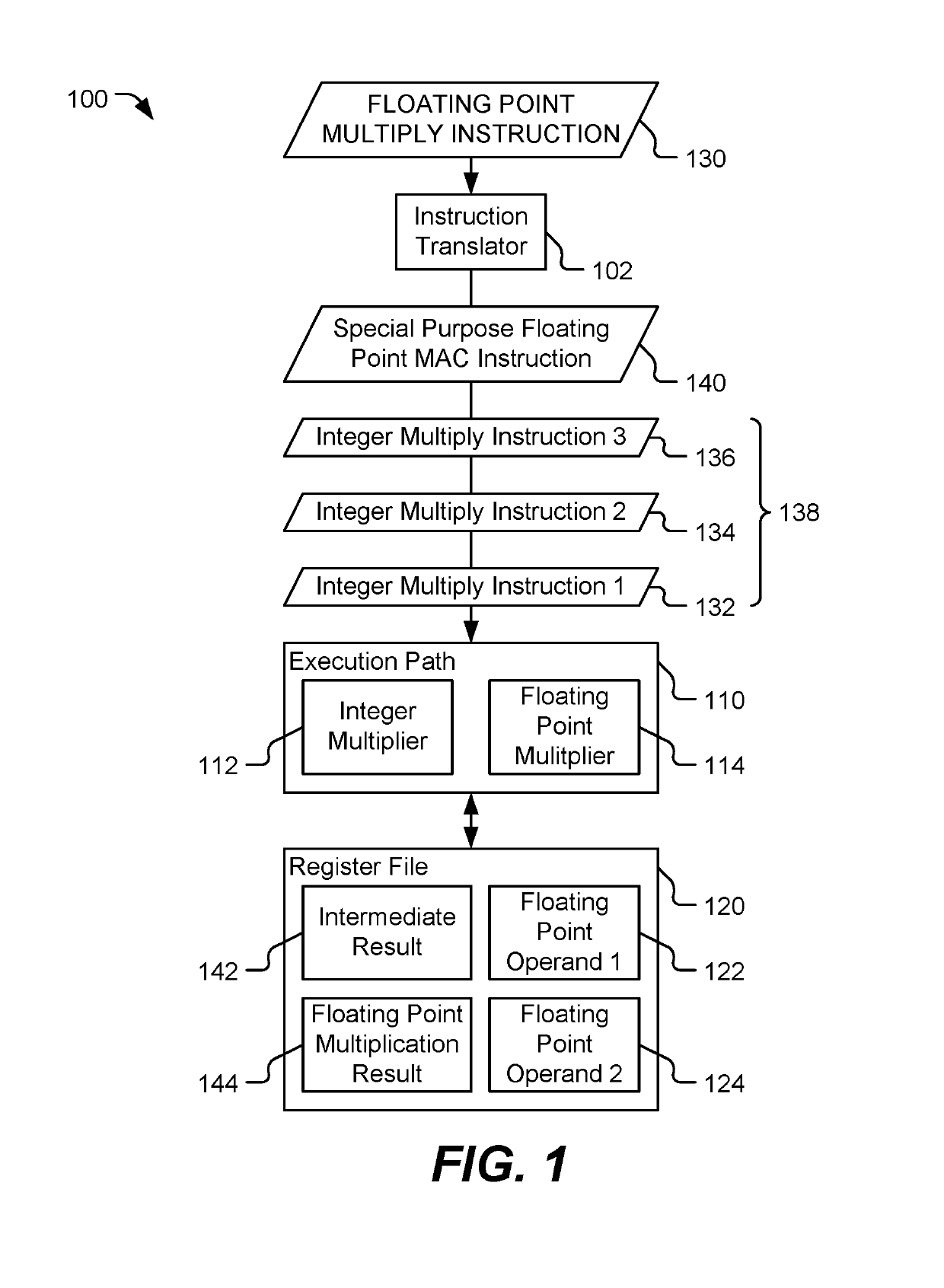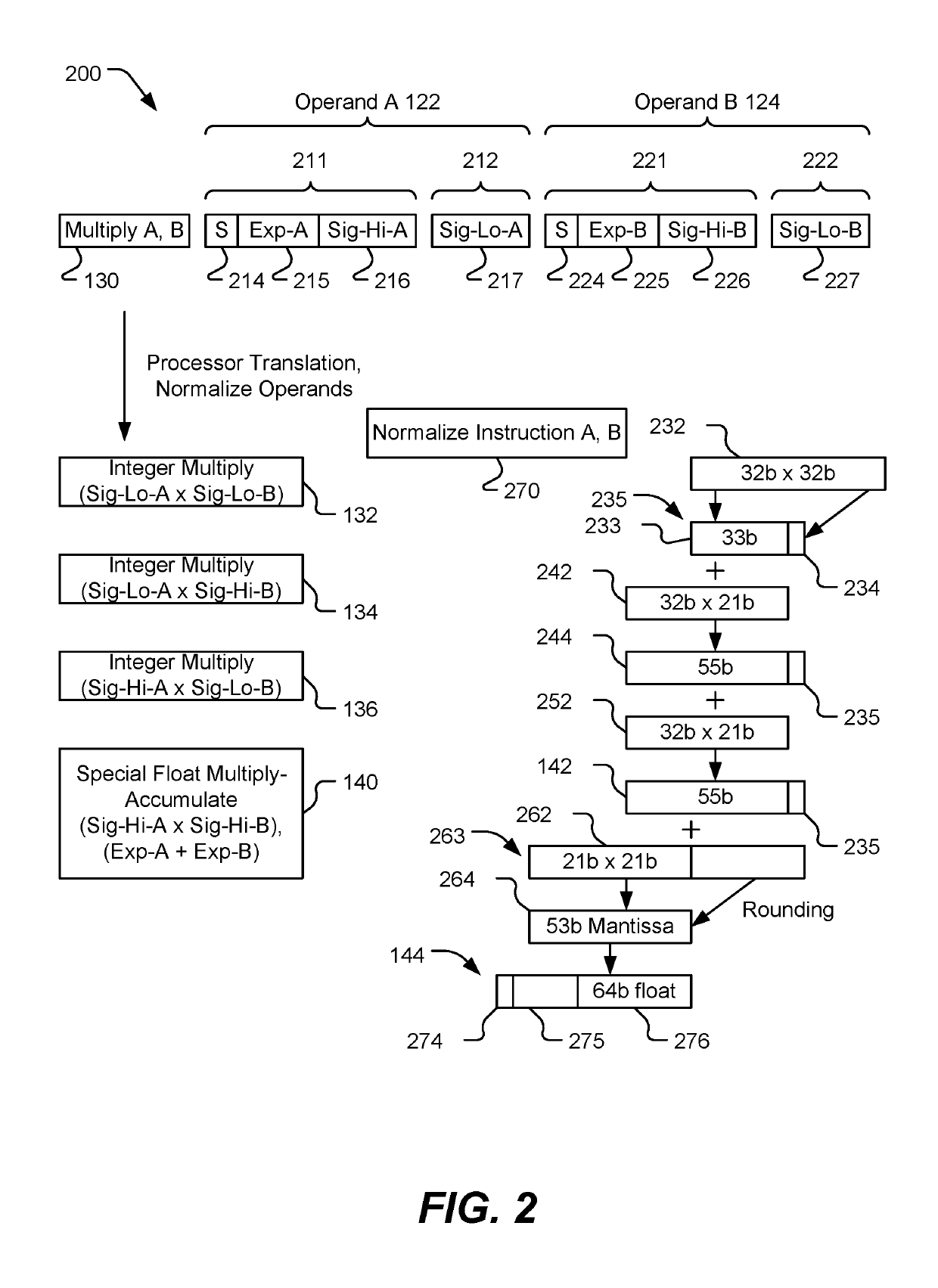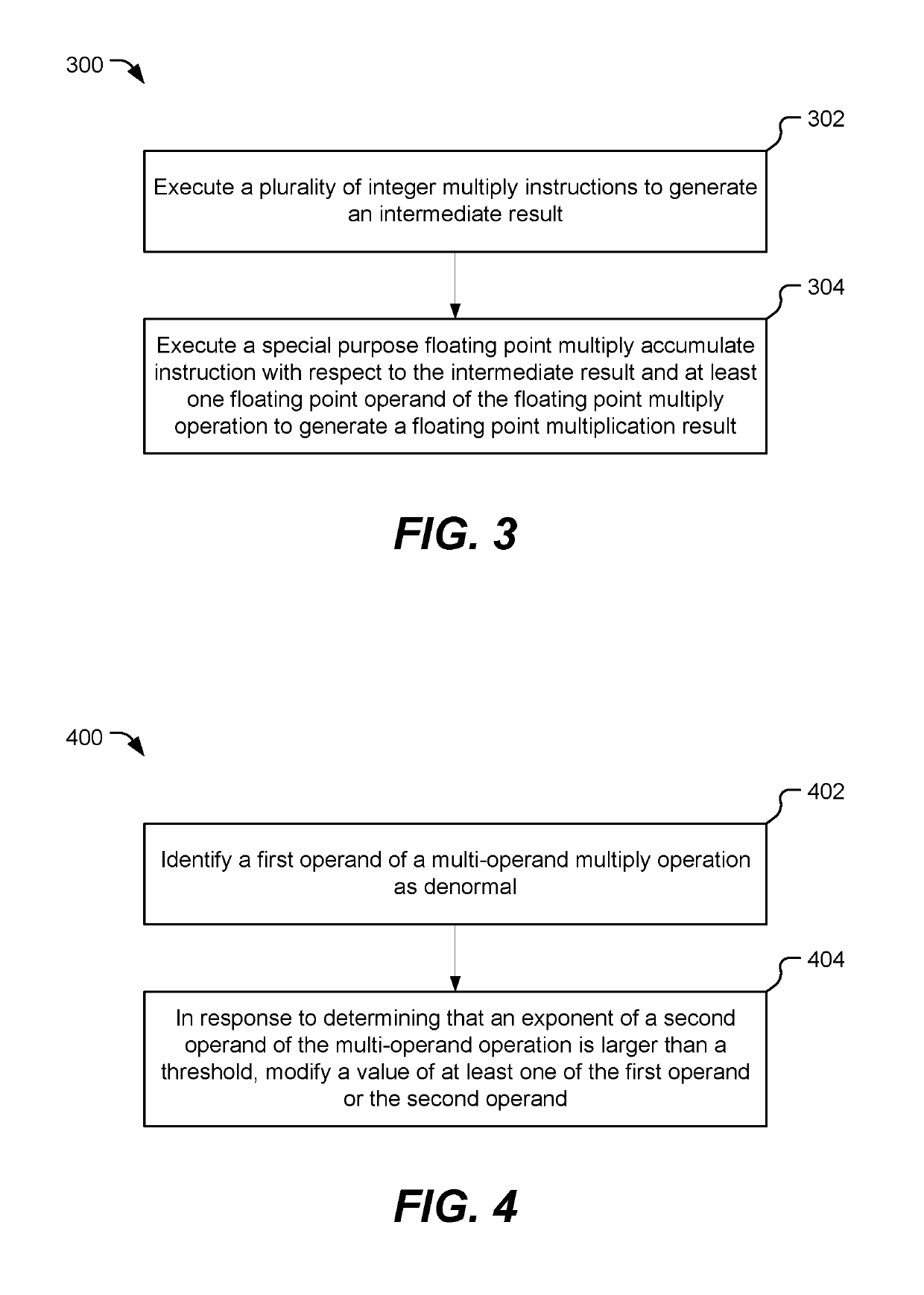System and method of floating point multiply operation processing
a floating point multiplier and operation processing technology, applied in the field of processors, can solve the problems of increasing the size and cost of the processor, introducing additional complexity and routing logic into the processor,
- Summary
- Abstract
- Description
- Claims
- Application Information
AI Technical Summary
Benefits of technology
Problems solved by technology
Method used
Image
Examples
example 1
[0029]Executing the second integer multiply instruction 134 causes the 32-bit integer multiplier 112 to perform integer multiplication of the low-order significand bits of the first operand, Sig-Lo-A 217, with high-order significand bits of the second operand, Sig-Hi-B 226, to generate a 53-bit value 242. The 53-bit value 242 is added to the 32-bit value 234 to generate a 55-bit value 244 (including the sticky bit 235).
[0030]In an example, the second integer multiply instruction 134 is a double float multiply low-high (DFMPYLH) instruction that multiplies a first, 32-bit operand from RssV.uw[0] (e.g., portion 212 storing Sig-Lo-A 217) to a second, 21-bit operand from RttV.uw[1] (e.g., Sig-Hi-B 226 from portion 221). The result of the multiplication is accumulated with (added to) the value in the register RxxV.
[0031]Prior to performing integer multiplication, DFMPYLH applies a mask to zero the sign bit (e.g., sign bit 224) and the exponent (e.g., Exp-B 225) of the second operand, dep...
example 2
[0033]Executing the third integer multiply instruction 136 causes the 32-bit integer multiplier 112 to perform integer multiplication of high-order significand bits Sig-Hi-A 216 of the first operand 122 with the low-order significand bits Sig-Lo-B 227 of the second operand 124 to generate a 53-bit value 252. The value 252 is added to the value 244 to generate the 55-bit intermediate result 142 (and the sticky bit 235). In an example, the third integer multiply instruction 136 is a DFMPYLH instruction as depicted in Example 2. The intermediate result 142 may therefore include a sum of partial products (e.g., the values 232, 242, and 252) and no exponent is used in the first three operations associated with the instructions 132, 134, and 136.
[0034]The special purpose floating point multiply accumulate instruction 140 is executed with respect to the intermediate result 142 and at least one floating point operand to generate the final floating point multiplication result 144. For exampl...
PUM
 Login to View More
Login to View More Abstract
Description
Claims
Application Information
 Login to View More
Login to View More - R&D
- Intellectual Property
- Life Sciences
- Materials
- Tech Scout
- Unparalleled Data Quality
- Higher Quality Content
- 60% Fewer Hallucinations
Browse by: Latest US Patents, China's latest patents, Technical Efficacy Thesaurus, Application Domain, Technology Topic, Popular Technical Reports.
© 2025 PatSnap. All rights reserved.Legal|Privacy policy|Modern Slavery Act Transparency Statement|Sitemap|About US| Contact US: help@patsnap.com



